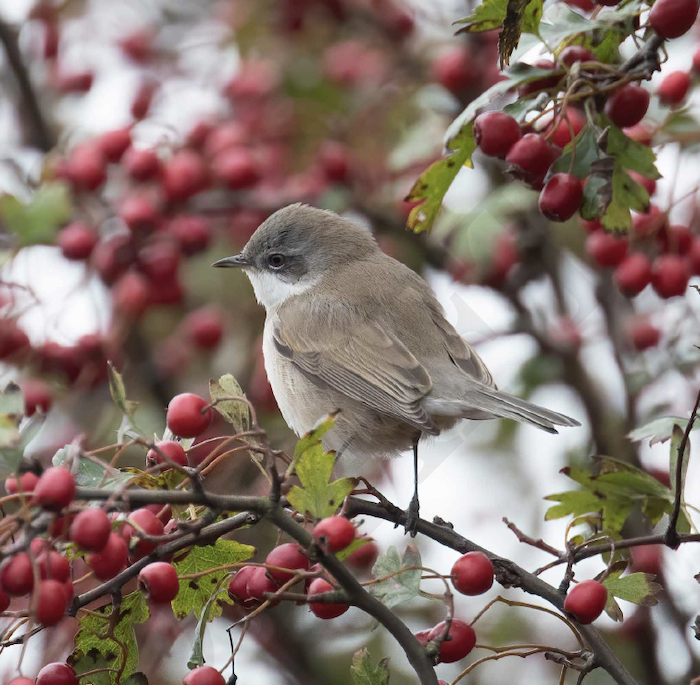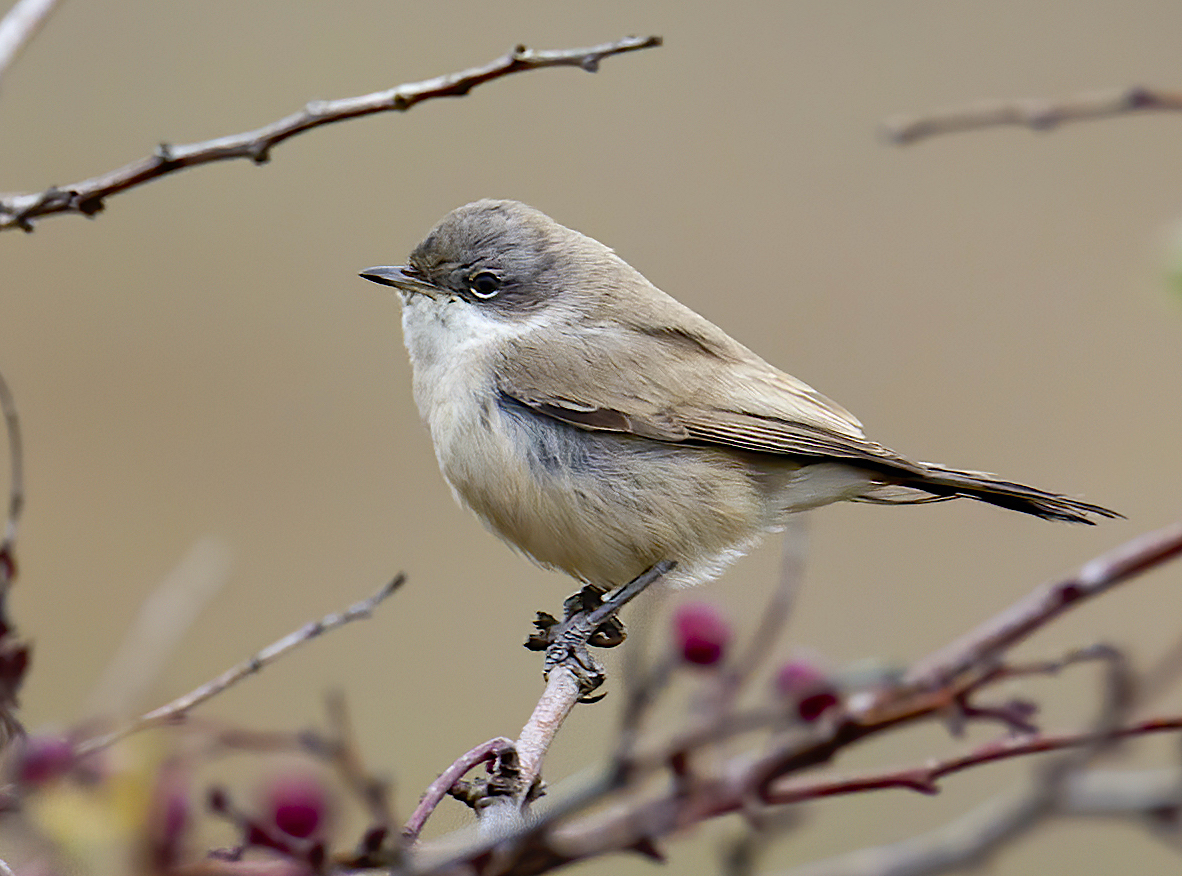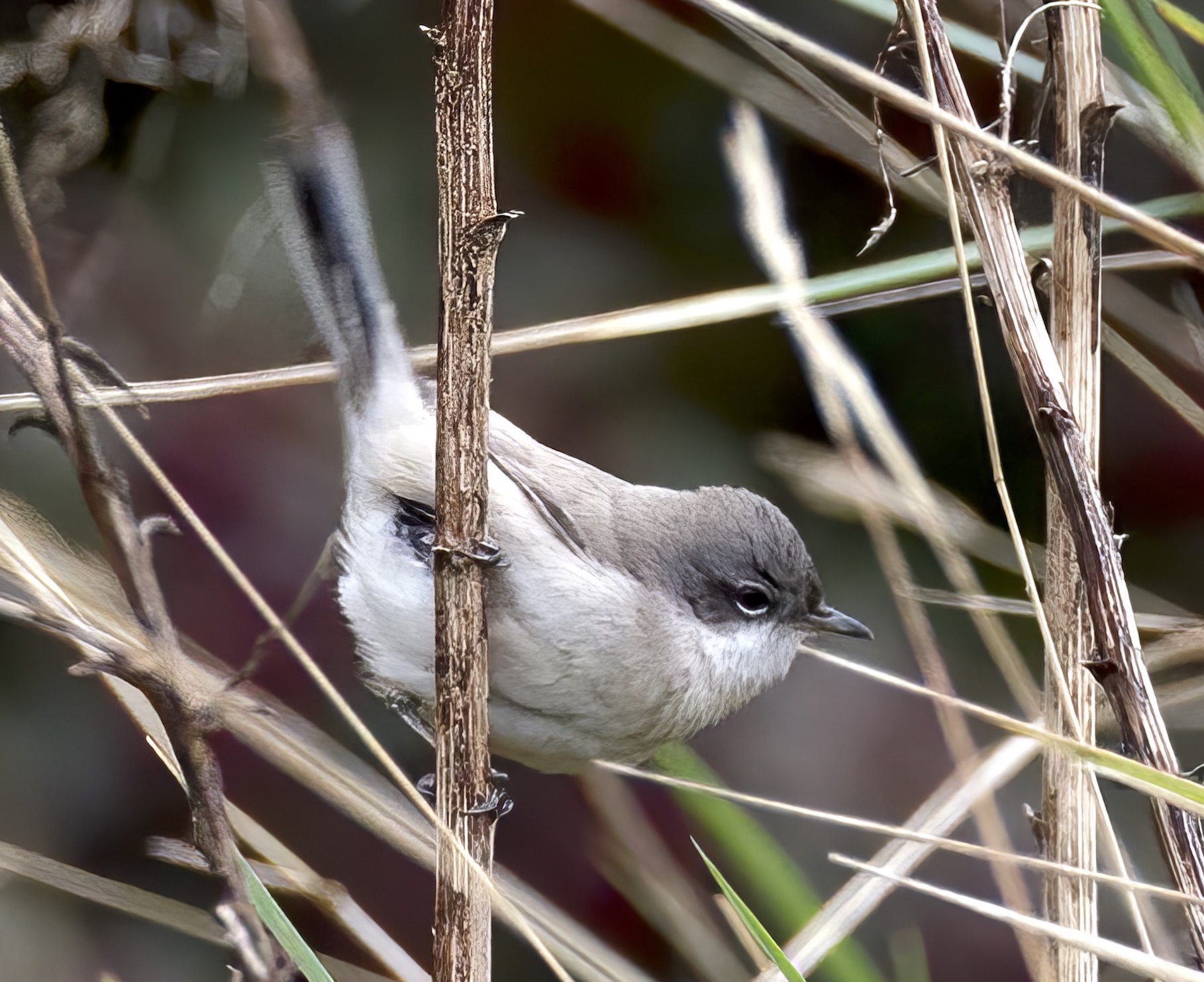'Eastern' Lesser Whitethroats Curruca curruca blythi and C.c. halimodendri
C.c. blythi (‘Siberian Lesser Whitethroat’) vagrant; north-central Siberia and N Kazakhstan to N Mongolia and NE China.
C.c. halimodendri potential vagrant, status uncertain; SE Russia, Kazakhstan, Uzbekistan, and Turkmenistan to NW Mongolia.
Siberian Lesser Whitethroat C.c. blythi

'Siberian' Lesser Whitethroat C.c. blythi Donna Nook October 15th 2019 2011(Graham Catley)
Identifying the ‘Eastern' Lesser Whitethroats in Britain has been a long process, but the taxonomy has settled somewhat, and genetic analyses have revealed more about the birds reaching Britain. The Siberian subspecies S. c. blythi, a regular scarce migrant in mid- to late autumn in Britain, is still a vagrant in Lincolnshire. Lorand and Atkin (1989) mention birds ‘showing characteristics of S.c. blythi’ but the first definitive mention of this race was in LBR 1981 when five were seen in total: two at Saltfleetby-Theddlethorpe NNR October 18th; one Theddlethorpe October 18th; one Anderby Creek October 20th and 25th; one Donna Nook November 14th. All with had good descriptive evidence. The following is the verbatim account from the 1981 report:
The first two birds seen at Saltfleetby on October 18th were part of a fall of Siberian passerines which included Richard's Pipit, Yellow-browed and Pallas's Warbler. At first glance these birds were not immediately obvious as Lesser Whitethroats. The most obvious difference to 'normal' autumn Lesser Whitethroats was the colour of the mantle and wings which were a warm brown, tending to rusty, with prominent pale edges to the tertials resembling Whitethroat, Sylvia communis. The head pattern was also noticeably dull with little sign of the dark mask through the eye, a faint pale supercilium and a dull grey crown. The whole of the underparts were a clear creamy-white. With the aid of ‘Williamson’ these birds were identified as belonging to the subspecies S.c. blythi which breeds in west Siberia north to the limit of forest growth and across to the Altai and Kirghiz steppes. This race normally winters in southeast Persia, Afghanistan, Baluchistan, and India.
Two others were found in 1987: one was trapped and ringed at Gibraltar Point NNR September 27th and another was seen at Donna Nook, October 4th. A more recent example was the bird at Donna Nook October 15th-18th 2019 (photo, above). From published records in the LBR and the LBC database they average less than one per year, but the suspicion remains that they are under-recorded.
Central Asian Lesser Whitethroat C.c. halimodendri (BBRC)


Putative C.c. halimodendri Lesser Whitethroat Donna Nook November 9th-11th 2011 (Graham Catley)
There are two records of individuals showing characteristics of C.c. halimodendri. One was a well-documented bird at Donna Nook November 9th-11th 2011 (photos, above) and a full description is given by Catley (2011):
The bird landed in a small hawthorn but then quickly went down into the marram where it was catching caterpillars; it could be easily overlooked and we lost it for an hour or so but it could generally be found in the grass or low in the scattered elders and hawthorns where it seemed to go when disturbed. It was strikingly pale sandy on the upperparts and with a contrasting whitish throat and upper breast then a peachy – buff lower breast, belly and flanks. The bill was short and the head pattern weakly marked compared to nominate Lesser Whitethroat with a white crescent below the eye being more obvious than the weak crescent above; most of the features of the bird are shown in the attached photos with a poor OOF flight shot that shows the extent of white in the outer tail feathers. Its jizz was often reminiscent of Desert Warbler tipping forward when feeding and even burrowing into clumps of marram when searching for food. The most distinctive feature of the bird apart from its looks was its call a mid toned dry rattles series of notes described as trrrrrrrrrt total dissimilar to the call of nominate birds.
Note the importance of describing, and if possible, recording the call (see these two YouTube videos: http://www.youtube.com/watch?v=a0js9PwYsWo and http://www.youtube.com/watch?v=E3NMx_GruXQ).
A list of recently accepted British records (8 in all) were all confirmed by DNA analysis (Holt et al 2019) and BBRC retains a file of submissions of potential halimodendri records, and also those of Desert Whitethroat C. minula, pending the agreement of accepted criteria for field identification. Current BBRC advice for submission of candidate halimodendri is as follows:
Vocalisations offer useful clues and should be recorded where possible, whilst full biometrics should be documented for a trapped bird. Any material from a trapped bird should be retained for DNA analysis. Claims of 'halimodendri' are welcomed if accompanied by detailed notes and good photographs. However, sound recordings, biometrics, a ringing recovery, or DNA analysis would all provide more solid evidence until field criteria can be fully defined.
References
Bradshaw, C. and Collinson, M.(2014). The Siberian Lesser Whitethroat in Tynemouth. Accessed December 2022 at https://www.birdguides.com/articles/the-siberian-lesser-whitethroat-in-tynemouth/
Catley, G. P. (2011). Desert / Central Asian Lesser Whitethroat at https://pewit.blogspot.com/2011/11/desert-central-asian-lesser-whitethroat.html?m=1
Holt, C. and French, P. and the rarities Committee (2019). Report on rare birds in Great Britain in 2018. British Birds 112(10): 556-626.
Olsson, U., Leader, P. J., Carey, G. J., Khan, A. A., Svensson, L. & Alstrom, P. (2013). New insights into the intricate taxonomy and phylogeny of the Sylvia curruca complex. Mol. Phylogenet. Evol. 67: 72-85
(Updated with reference to the new Birds of Lincolnshire (2021) December 2022)
{/mprestriction}











